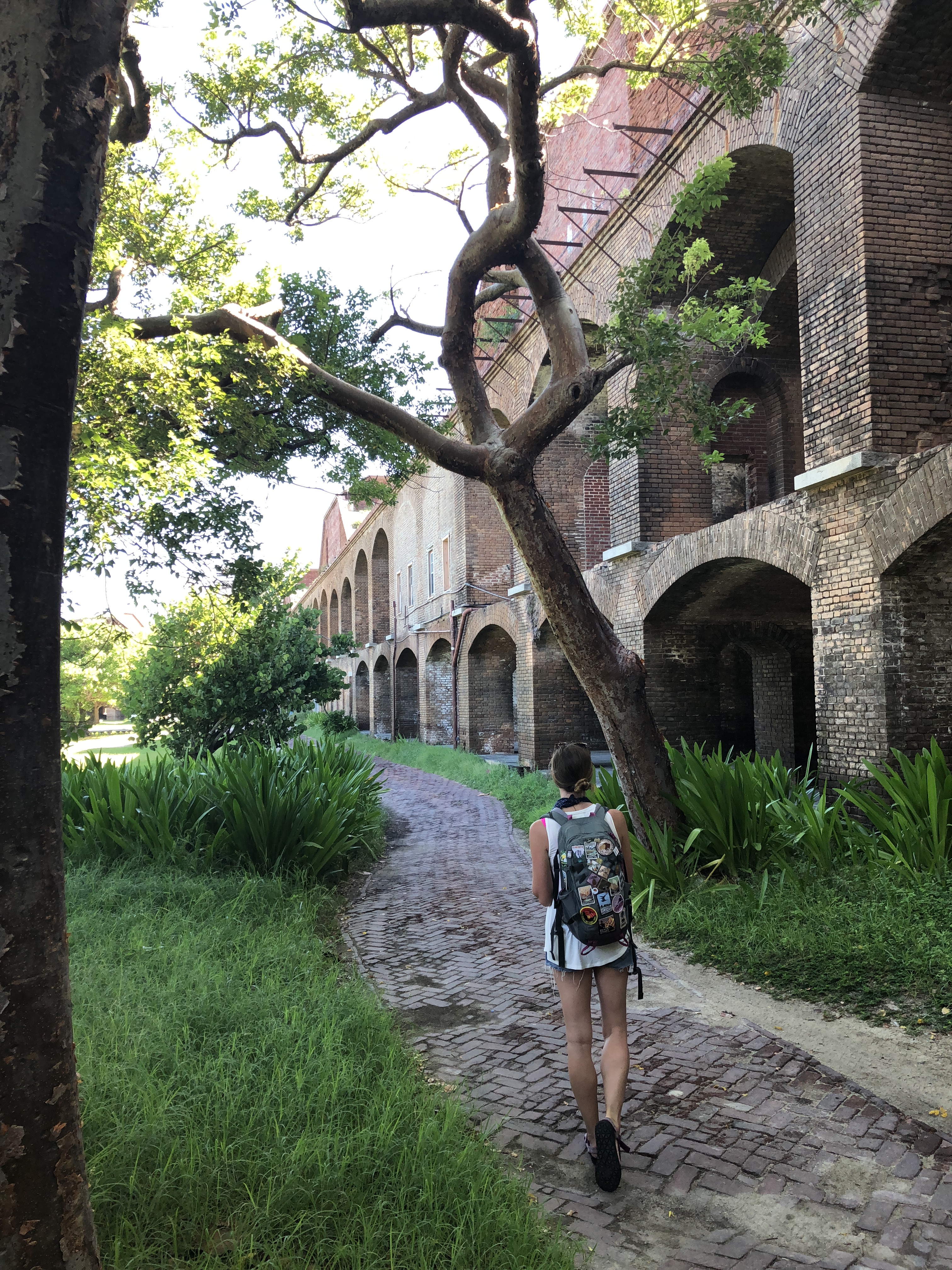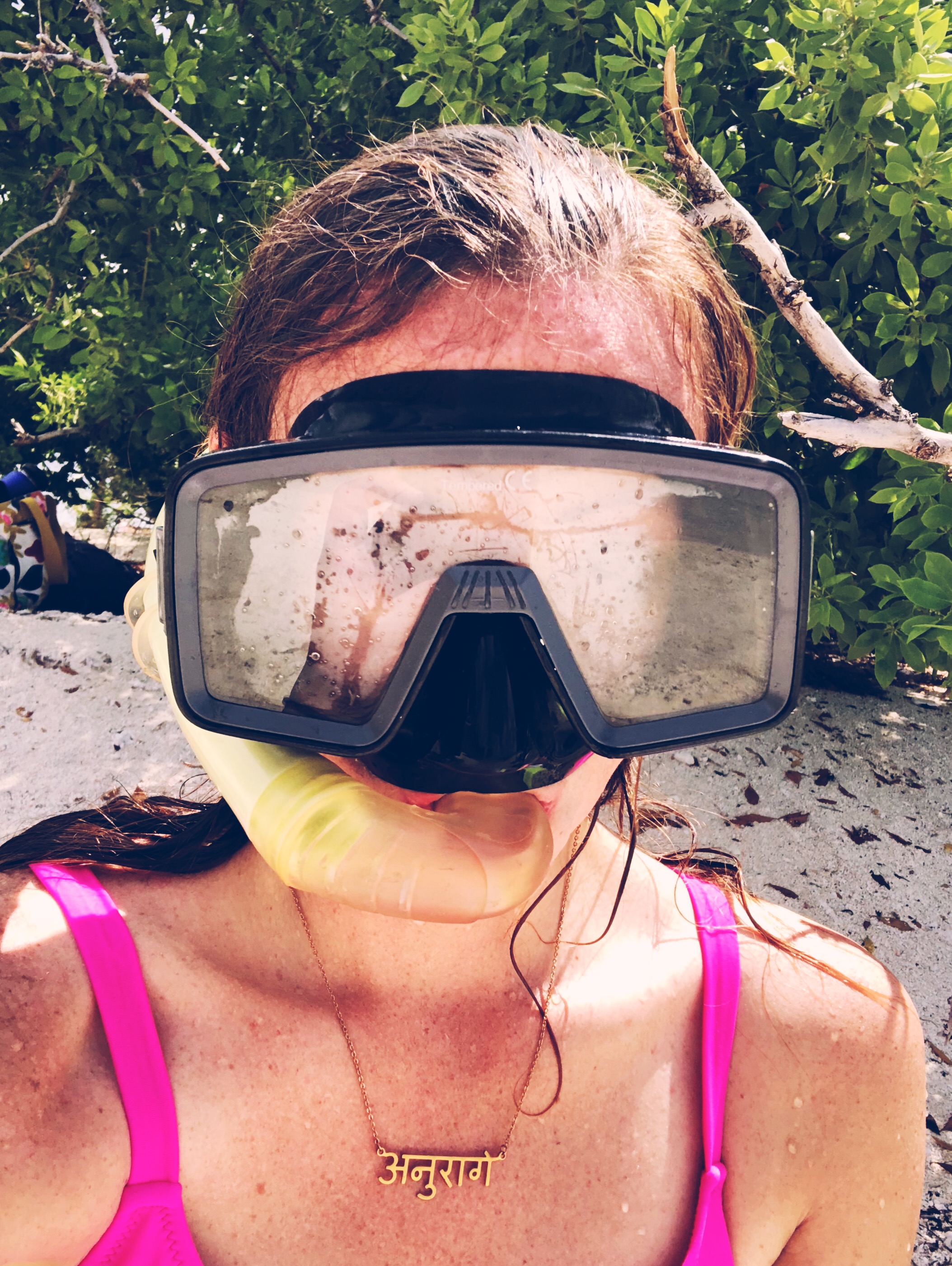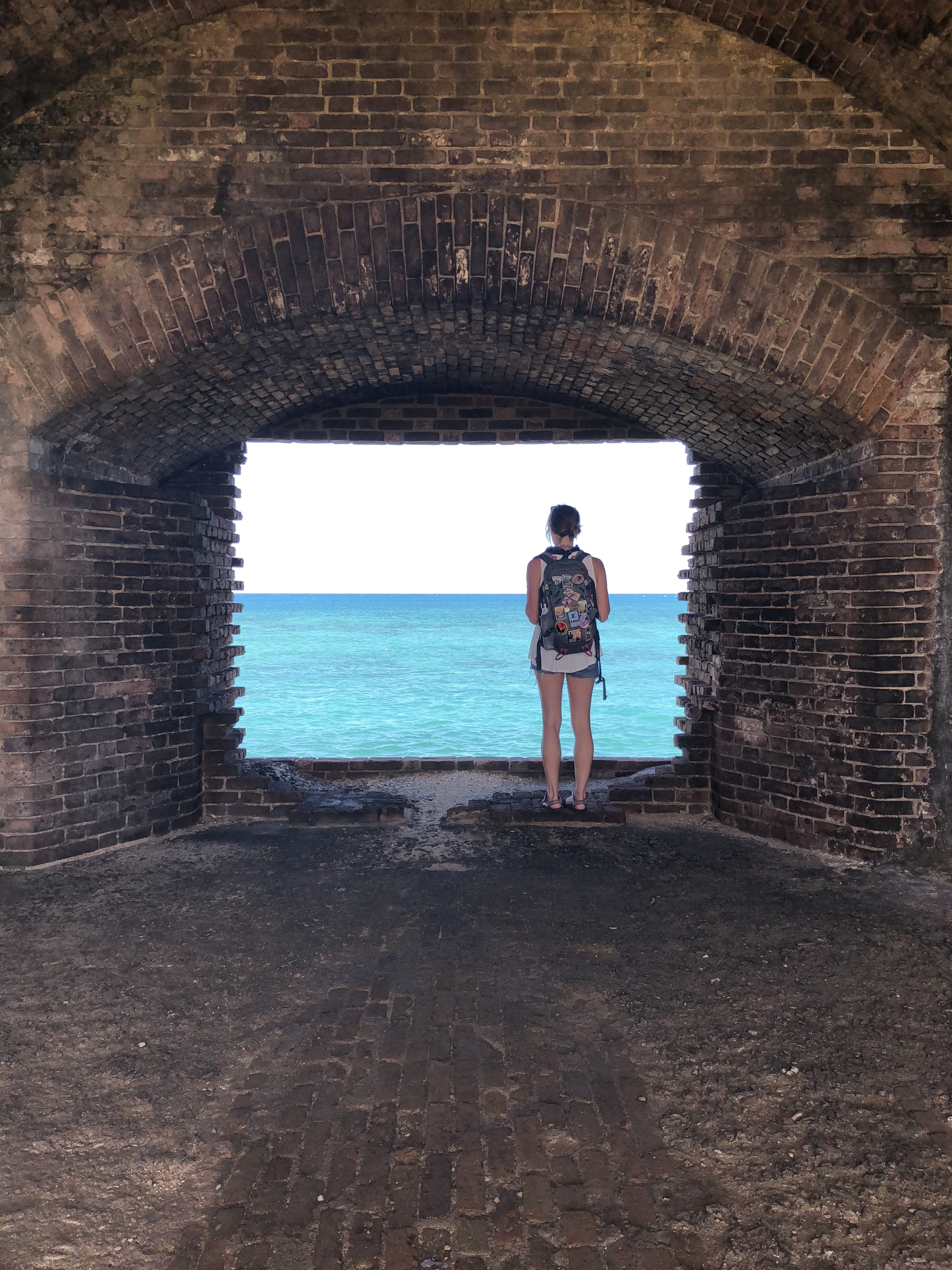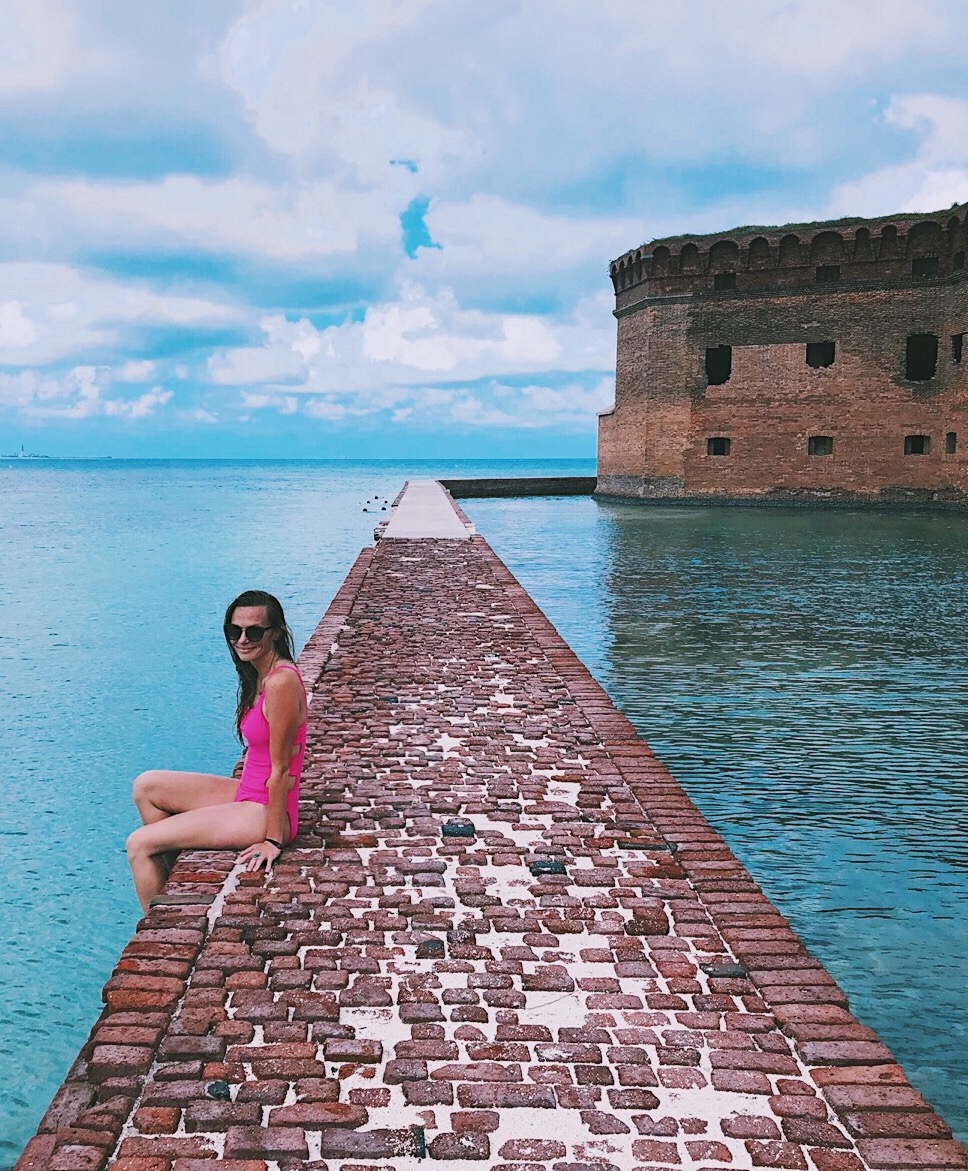
“You’ve been more places than I have,” calls a stranger on the dock. “I saw your patches on the ferry.”
He unshoulders his own pack and his friends hang back as we excitedly compare patches. We discuss which National Parks are best for camping, seeing the stars, and wildlife. We are a certain breed — the National Parks traveler. An ever-increasing (thanks, Instagram) group of people set on visiting all of the US National Parks. And we’ve just arrived at one of the most remote. Arguably the most interesting, too.
But that’s getting ahead a little…
***
I wake up at 3 am in South Florida. I stumble towards my rental car, trying not to wake my Airbnb hosts, and set my GPS — wondering for the 100th time if this is a good idea. To drive so far from my Miami lodgings for such a short trip. Alone.
I’m this close, I think. I have to do it.
I’m the only car on the road. Pitch black darkness. I know I’m periodically over the water — the signs on the highway make that clear — but I can’t see it. I whisper aloud, “this must look beautiful in the daylight”. (Spoiler alert: it does.)
After a little over three hours of driving, just as dawn is about to break, I find the random (read: sketchy) parking garage that I’m looking for. I follow the other tired, slightly confused tourists ambling towards a fee station. Someone has a beach blanket — this must be the place.
I watch the darkness turn to light as I check in with the ferry operator. I’m still groggy, but excited. Waiting to board my ferry. I get on the boat, detour through the breakfast buffet, and make my way to the sun deck. And then we’re off. Soon Key West, Florida is in the distance and all that lies in front of us is clear blue water. The sun comes out and bounces across the ripples in the waves.
Somehow we’re still in America, though it feels far more tropical than any America I’ve ever known. Two hours away from our destination: Dry Tortugas National Park.

Most people have never heard of the Dry Tortugas National Park, and far fewer have ever visited. While it’s only 70 miles west of Key West, the park is certainly a challenge to get to. It requires advance planning. You have to really want it. In fact, Dry Tortugas National Park only receives 63,000 visitors annually. To put that in perspective, the Great Smoky Mountains — the most visited of the designated “National Parks” — boasts over 11 million visitors per year.
The Dry Tortugas are actually seven separate islands, but unless you’ve got your own boat Fort Jefferson is where you’ll end up. The only public transport is on the aforementioned ferry or with a seaplane. The ferry will cost you $180, while the seaplane will set you back anywhere from $350 to $625. Like I said, you have to want it.
After saying goodbye to my fellow patch collector, I bypass the beach (for now) and immediately enter Fort Jefferson. It’s the largest masonry fort in the US — made with over 16 million bricks — built to protect the gateway to the gulf. It was never finished, but that only adds to the pirate-vibes and tumbledown beauty. During the Civil War, the fort was home to prisoner-soldiers (and their families). One of the most well-known prisoners confined on the island was Dr. Samuel Mudd — the doctor who aided and abetted John Wilkes Booth after President Lincoln’s assassination. It’s a history buff’s dream.
I explore the fort with my mouth agape — walking through the cells, taking every chance to admire the turquoise water just outside its walls. The contrast is jarring. There’s a combination of textures and colors that I find genuinely surprising, and having visited 47 of the 61 National Parks, surprising me is getting harder and harder.
I wander back to the ferry. My ticket included snorkel gear, and to be honest, I feel hesitant about whether to try it. I generally shy away from things like this when exploring. I travel alone, which is already a vulnerable position — activities that require props of some kind just seem to make me that much more exposed. But as I watch the safety video, completely enthralled, I know I can’t say no. The clear blue water, the tropical fish, and coral along the moat seem too beautiful to ignore.
I spent most of the afternoon snorkeling. Rarely coming up for air. It was a highlight of my day.

I can’t help but let my imagination wander. Pretend I’m marooned here. My childhood Gilligan’s Island fantasy come true. Because really, the thing that made Gilligan’s Island so interesting was the cast of characters. The idea that these disparate people were thrown together in a place without a way back to the mainland. While a trip to Dry Tortugas isn’t quite as dramatic, the pieces were all there. I listen in and take part in conversations all day. Conversations with people from out of state, out of the country, and from the surrounding area. Conservatives and liberals; young and old.
In most National Parks, you meet a certain type of person. They’re outdoorsy, into backpacking, or hiking, or nature, or patch collecting. There is a general feeling or description you can give — superficially at least — to the people who visit the parks in Utah, or Arizona, or Colorado. A vibe to Northern California or the Olympic Peninsula. Joshua Tree is just like you want it to be.
But a place like Dry Tortugas isn’t so easily pigeonholed. It’s an enigma. I didn’t know what to expect going in. I didn’t buy my ticket until the night before. I drove there in the dark. I boarded a private ferry with strangers, hoping that it would lead me somewhere special. It didn’t seem like most of the people there even knew it was a National Park. That was just a pleasant surprise for them. Another box checked.

As I board the ferry to return home, I realize that maybe what we all really wanted was an escape. Crystalline waters and deserted beaches. A place where we could leave our belongings without worry, where we could bump into someone from across the world snorkeling, or ask a stranger taking photos if she wouldn’t mind taking ours. Where there are no roads. No wifi. No air conditioning.
We all seemed to long for a place where you have to physically touch the landscape. The sand. The brick. Walk amongst the fort. Swim in the ocean. Use your senses.
We wanted to be someplace that still felt wild. And this one definitely did.







